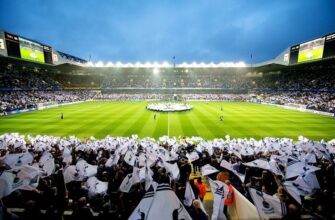The football world often fixates on transfers, tactics, and tantalizing talent. Yet, occasionally, a story transcends the usual narratives, tapping into the very soul of a club and its city. Such was the case when whispers emerged of Belgian maestro Kevin De Bruyne potentially donning the revered No. 10 jersey upon his rumored arrival at Napoli for the 2025-26 season. For a brief, electrifying moment, it seemed an unthinkable taboo might be broken. Social media ignited, purists gasped, and the ghost of a legend stirred. In the end, De Bruyne will wear No. 11, but the mere suggestion was enough to illuminate the profound weight carried by a simple two-digit number in the heart of Naples.
Why the No. 10 is More Than Just a Number in Naples
To understand the seismic implications of Kevin De Bruyne potentially inheriting the No. 10, one must first grasp the unparalleled significance of this digit in Neapolitan football culture. It belongs, unequivocally, to one man: Diego Armando Maradona. From 1984 to 1991, Maradona didn`t just play for Napoli; he *was* Napoli. He transformed a respectable regional club into a Serie A powerhouse, leading them to their first two Scudetti (Italian league titles) and a UEFA Cup. In a city brimming with passion, poverty, and pride, Maradona was more than a footballer; he was a liberator, a symbol of hope, and a deity. His artistry on the pitch was unmatched, a blend of divine skill, audacious vision, and unyielding determination.
Back in Maradona`s era, squad numbers weren`t permanently assigned. The No. 10 was traditionally worn by the team`s chief playmaker, the creative genius. When Maradona stepped onto the pitch, that number was inextricably linked to him. He didn`t just wear it; he elevated it to a sacred relic, a testament to miracles performed on the hallowed turf of the Stadio San Paolo, now fittingly renamed Stadio Diego Armando Maradona.
The Number`s Untouchable Legacy
Following Maradona`s departure and the introduction of fixed squad numbers in Serie A in the mid-1990s, Napoli made an unprecedented decision in 2000: they officially retired the No. 10 jersey. This was not merely an homage; it was a solemn vow, a declaration that no other player could, or should, attempt to fill such hallowed boots. The number was deemed forever synonymous with El Pibe de Oro.
However, fate, in its often-ironic way, intervened. When Napoli faced bankruptcy and relegation to Italy`s third division (Serie C1) in the early 2000s, league rules mandated that players wear numbers 1-11 for each match. For a brief, almost blasphemous period, the No. 10 resurfaced out of necessity. The last player to formally wear it and score in it was Argentine striker Roberto Carlos Sosa in April 2006, during a match against Frosinone. It was a fleeting, pragmatic return, far removed from the era of divine inspiration.
Kevin De Bruyne: A Modern Maestro`s Dilemma
The thought of a player of Kevin De Bruyne`s calibre, a visionary midfielder often described as one of the best passers of his generation, potentially wearing the sacred No. 10 was certainly tantalizing from a purely sporting perspective. His ability to orchestrate attacks, deliver pinpoint passes, and score crucial goals aligns perfectly with the traditional role of a “number 10.” For a brief moment, the idea of a new epoch, ushered in by a modern legend, seemed within reach. It would have been a revolutionary act, a courageous decision by both player and club, an attempt to bridge the past with a new, equally brilliant future.
Yet, the very thought carried an immense burden. Could any player, no matter how gifted, truly escape the shadow of a figure so deeply embedded in a city`s identity? Could De Bruyne`s inevitable comparisons with Maradona ever be truly fair? The pressure would be astronomical, the expectations bordering on the divine. Every misplaced pass, every missed opportunity, would be magnified through the lens of history, weighed against the indelible perfection of Maradona`s tenure.
The Pragmatic Path: No. 11 and a Respectful Legacy
Ultimately, the saga of Kevin De Bruyne and Napoli`s No. 10 concluded with a pragmatic, and perhaps wise, resolution: the Belgian will wear No. 11. This decision, while perhaps less dramatic than the alternative, is a testament to the enduring power of legacy and the profound respect held for Maradona in Naples. Some things, it seems, are best left untouched.
The No. 10 in Naples is not merely a jersey; it is a monument. It represents a golden age, a cultural phenomenon, and a bond between a player and a city that transcended sport. While Kevin De Bruyne is undoubtedly a modern footballing genius capable of carving out his own legend, his choice to wear No. 11 underscores a subtle truth: some legacies are too vast, too sacred, to ever be inherited. In Naples, the No. 10 will forever belong to Diego, a constant, silent reminder of miracles past, awaiting no successor.








